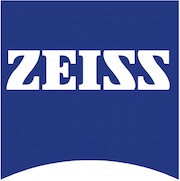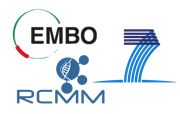Invitation
Are you interested in deciphering the structure and conformation of protein complexes? Would you like to study protein-protein interactions in live cells in different cellular compartments by sensitive biophysical methods? Would you like to learn all this information from experienced experts of the field?
If you find the program attractive, please register. Deadline of application: 15 May, fee: EUR 300, which includes accommodation and meals. If you are eligible for EMBO travel grant, please apply at the organizers.
On the last day of the event, 22 August, an EBSA satellite conference "Fluorescence correlation spectroscopy in cell biophysics" will take place, which is included in the course (but one can also apply separately).
Hope to see you in Debrecen, the second largest city of Hungary, which is only 2.5 hours away from Budapest Airport by direct IC train connection.
The organizers
Background
Most signaling proteins fulfill their roles in functional complexes. Thus protein-protein interactions are central to signaling processes. The study of protein complexes is important in practically every discipline of biomedical research ranging from cell biology to immunology.
Traditional biochemical techniques such as immunoblots or two-hybrid expriments give average information concerning protein-protein interactions from bulk homogenates of cellular material, thus fail to resolve fine differences in the interaction patterns of molecular subpopulationsinvolved in cellular signaling or effects of local molecular environment. To this end methods having single cell, or even better, single molecule resolution are needed, which are also capable of examining the proteins if interest in situ in their natural location. In this course different fluorescence spectroscopy and microscopy techniques will be introduced and their power to dissect molecular complexes in live cells will be demonstrated.
Techniques taught in the practices:
- Fluorescence resonance energy transfer (FRET) to detect molecular proximity, applied to membrane and nuclear proteins with various modalities (spectral based and acceptor photobleaching) implemented on confocal microscope and flow cytometer
-
Fluorescence correlation spectroscopy (FCS) to measure molecular mobility and binding, applied to transcription factors diffusing in the nucleus and binding to chromatin within the context of regulatory complexes
-
Number and brightness analysis to measure the stoichiometry of molecular complexes of membrane receptors
-
Fluorescence recovery after photobleaching (FRAP) to study the mobility of cell membrane receptors in membrane microdomains
Further techniques covered in the lectures:
-
Fluorescence lifetime imaging microscopy (FLIM)
-
Multidimensional single molecule fluorescence spectroscopy
-
Dual color Photo-activated localization microscopy (PALM)
In order to make the most out of the course, a basic knowledge of fluorescence concepts and fluorescence microscopy or flow cytometry is recommended.





